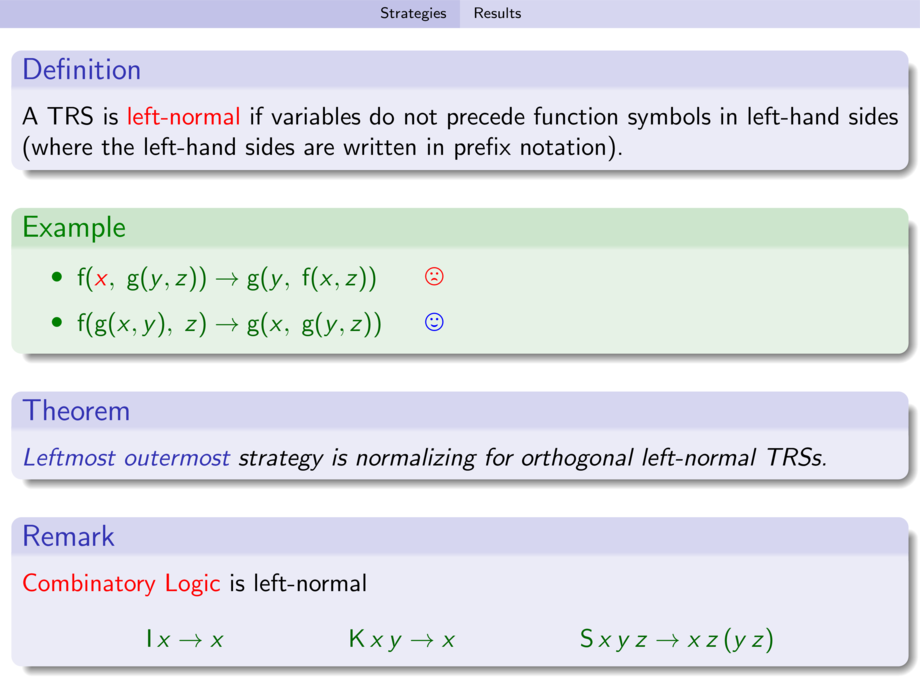



































































































143/143
\begin{frame}
\small
\begin{definition}
\smallskip
A TRS is \alert{left-normal} if variables do not precede function symbols
in left-hand sides (where the left-hand sides are written in prefix notation).
\end{definition}
\smallskip
\begin{example}<2->
\begin{itemize}
\item
\makebox[4cm][l]{$\GREEN{\m{f}(\alert<3->{x},\; \m{g}(y,z)) \to
\m{g}(y,\; \m{f}(x,z))}$}
\qquad
\onslide<3->{$\huil$}
\item<4->
\makebox[4cm][l]{$\GREEN{\m{f}(\m{g}(x,y),\; z) \to \m{g}(x,\; \m{g}(y,z))}$}
\qquad
\onslide<5->{$\lach$}
\smallskip
\end{itemize}
\end{example}
\smallskip
\begin{theorem}<6->
\smallskip
\structure{Leftmost outermost} strategy is normalizing for
orthogonal left-normal TRSs.
\end{theorem}
\smallskip
\begin{block}<7->{Remark}
\smallskip
%easy but \alert<7>{important} result:
\alert{Combinatory Logic} is left-normal
\GREEN{\begin{xalignat*}{3}
\m{I}\,x &\to x &
\m{K}\,x\,y &\to x &
\m{S}\,x\,y\,z &\to x\,z\,(y\,z)
\end{xalignat*}}
\vspace{-4ex}
\end{block}
\end{frame}

